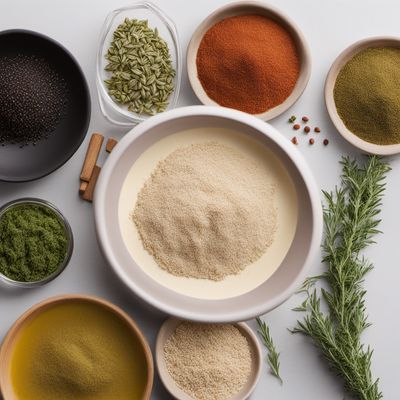
Dish
Ka'ak
Ka'ak is made from flour, yeast, salt, sugar, and water. The dough is shaped into a ring and baked until golden brown. The bread has a crispy crust and a soft, fluffy interior. Ka'ak is commonly served as a snack or appetizer and can be filled with cheese, herbs, or spices.
Origins and history
Ka'ak originated in the Middle East and is a staple in Middle Eastern cuisine. It is believed to have been introduced by the Phoenicians who settled in the region in the 2nd millennium BC. The bread is similar to other Middle Eastern breads, such as pita and lavash, but has a unique ring shape.
Dietary considerations
Ka'ak is not suitable for people with gluten intolerance or celiac disease.
Variations
There are many variations of ka'ak, including ka'ak bi ajwa, which is filled with dates and nuts, and ka'ak bi za'atar, which is topped with a mixture of herbs and spices. Some variations also include sesame seeds or anise in the dough.
Presentation and garnishing
Ka'ak is traditionally served whole, but can also be sliced and toasted for added texture. It is often garnished with sesame seeds or anise.
Tips & Tricks
To keep ka'ak fresh, store it in a paper bag at room temperature for up to two days. To reheat, wrap it in foil and place it in a preheated oven for 10-15 minutes.
Side-dishes
Ka'ak is commonly served as a snack or appetizer and can be filled with cheese, herbs, or spices. It can also be served with dips, such as hummus and baba ghanoush.
Drink pairings
Ka'ak pairs well with Middle Eastern teas, such as mint tea and saffron tea. It can also be served with Arabic coffee or Turkish coffee.
Delicious Ka'ak recipes
More dishes from this category... Browse all »

Acorn Bread
Native American cuisine

Alkubus
Moroccan cuisine

Almojábana
Colombian cuisine

Anadama Bread
American cuisine

Antiguan Butter Bread
Antiguan cuisine

Baati
Indian cuisine

Babà rustico
Italian cuisine

Baguette
French cuisine
More cuisines from this region...

Iraqi cuisine
Spicy, Flavorful, Aromatic, Bold, Tangy

Israeli cuisine
Savory, Tangy, Spicy, Sweet, Herbaceous

Jordanian cuisine
Spicy, Savory, Herbaceous, Tangy

Mizrahi Jewish cuisine
Spicy, Savory, Herbaceous, Tangy

Palestinian cuisine
Savory, Tangy, Earthy, Herbaceous, Nutty

Syrian cuisine
Savory, Tangy, Earthy, Herbaceous, Nutty

